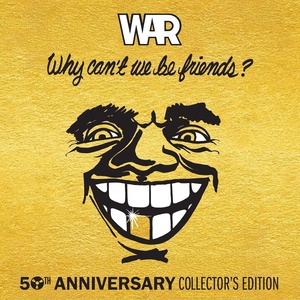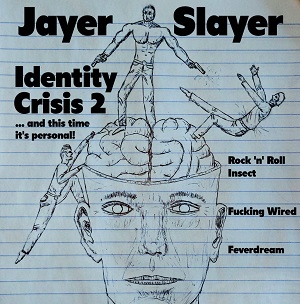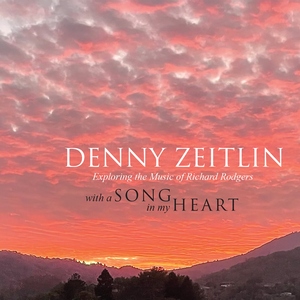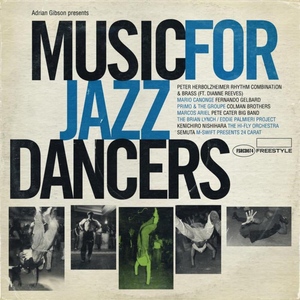Dozens of new albums arrive at Maxazine’s editorial staff every week. There are too many to listen to, let alone review. This ensures that too many albums are left behind, and that’s a shame. That is why today, we post an overview of albums that arrive at the editors in short reviews.
Photo (c) Jorge Fakhouri Filho
WAR – Why Can’t We Be Friends 50th Anniversary Collector’s Edition – 3CD box
WAR released an album in 1975 that can rightfully be called a redefinition of the jazz-rock genre: “Why Can’t We Be Friends”, although many may have purchased the record because of the image on the cover. Packaged in a mix of funk, soul, and Latin, the group delivered a clear, unmistakable message that sharply condemned the absurd inequality between people. The record hasn’t lost a millimetre of relevance in 50 years, quite the contrary. Fans will have been pleasantly surprised by the special Record Store Day edition of this monument: on three LPs, you won’t only get the original album, but also a truckload of bonus material. Unfortunately, with a price tag of more than a hundred euros, this was mainly reserved for the more affluent vinyl collector. Did someone mention inequality? Fortunately, Rhino has now also put all this material on 3 CDs. For this, you need to leave forty euros at your record dealer. It’s worth it. The energy already jumped off the record as it was released in ’75, but the pure, first versions of “Low Rider” and “So” plus the jam session that led to “Heartbeat” form the superlative in everything. That’s how those tracks should have been. (Jeroen Mulder) (8/10) (Rhino)
Chaka Chawasarira – Useza
In a time when traditional music in Zimbabwe threatens to disappear due to evangelical condemnations, Sekuru Chaka Chawasarira proves with “Useza” that authentic Zimbabwean matepe music can still directly touch the heart. The 82-year-old master of the thumb piano is one of the last remaining virtuosos of this complex instrument, which is played with thumbs and index fingers to create hypnotising polyrhythms. The album was recorded in the dead silence of night in Chitungwiza, where Chawasarira works alone to recreate the enchanting sounds of a Shona ritual by layering discreet fractal sequences full of ghostly overtones and buzzing rhythms over each other. The result is wonderfully kaleidoscopic – music that you can listen to from different perspectives and that reveals new layers each time. Chawasarira, born in 1941 and raised as an orphan in a Catholic mission, has devoted his entire life to preserving this nearly extinct art form. Where fifty years ago, six or more musicians still played together in ceremonies of the Sena Tonga and Kore-Kore peoples, fewer than ten masters now remain. His overdubs on tracks like “Hurombo” and “Kuvachenjedza” show what one person can achieve with pure dedication. It’s beautiful that Nyege Nyege Tapes, the Kampala-based label that focuses on exploring outsider music from the region, makes room for these ancestral sounds alongside their usual electronic releases. This authentic documentation of Zimbabwe’s heritage deserves all respect and attention in a world that too quickly forgets where its roots lie. (Jan Vranken) (7/10) (Nyege Nyege Tapes)
Jayer Slayer – Identity Crisis 2
Swiss one-man musician Jayer Slayer presents with “Identity Crisis 2” an eclectic EP that deliberately seeks the boundaries between serious musical ambition and playful experimentation. This is Jayen’s first venture into EP form, in which he shows himself as an artist who feels at home within the lo-fi aesthetic of home recordings. The three tracks move between Zappa-like progressive turns and the rougher energy of Primus. “Rock ‘n Roll Insect” opens with characteristic idiosyncrasy, with a bassline that immediately sounds familiar. “Fucking Wired” raises the intensity with a direct and raw approach. The highlight is undoubtedly “Feverdream”, a skillfully composed piece that contains multiple subtle tempo changes and reveals a rich instrumental layer that transcends the lo-fi character. Jayer Slayer’s paradoxical attitude, which is as serious as it is not to be taken seriously, works surprisingly well. The EP feels simultaneously like a lived musical statement and a playful finger exercise. For lovers of experimental rock with a touch of absurdism, this is a promising discovery. (7/10) (Self-released)
Denny Zeitlin – With a Song in My Heart
Richard Charles Rodgers: a name that is inextricably linked to Broadway, with an incredible production: the man wrote around fifteen hundred songs in 37 musicals. Jazz pianist Denny Zeitlin must have experienced choice stress when selecting the songs he presents on this “With a Song in My Heart”. The next choice you have to make as a performing musician is: do I stick to the original or do I do something special with it? Zeitlin is seasoned and experienced enough to give his spin to the eleven classics. You hear this directly in the opening, “Falling In Love With Love”. The original melody is certainly recognisable, but Zeitlin adds new rhythm to it and a few surprising tonal modulations. That playing with rhythms is something Zeitlin repeats more often: thus, “I Didn’t Know What Time It Was” indeed gets a different time, by playing it in 7/4. The pianist himself has now reached the more than respectable age of 87, but there’s nothing to notice of that on this album. Zeitlin plays with an enthusiasm that many younger colleagues could take as an example. A worthy tribute to a Broadway legend. (Jeroen Mulder) (8/10) (Sunnyside Communications)
Various Artists – Music for Jazz Dancers
This compilation by DJ Adrian Gibson is a perfect snapshot of the British jazz-dance scene that has caused shockwaves around the world. Gibson, known from his legendary “Messin’ Around” club at the Jazz Café, has compiled here a collection that comes straight from his sets – and you can hear it. The album opens explosively with Peter Herbolzheimer’s storming rendition of the Ray Noble jazz standard “Cherokee” with Dianne Reeves, who immediately sets the tone with her silky smooth vocals. This isn’t lazy lounge jazz, but dancefloor fuel of the highest quality. Mario Canonge’s “Kon Djab Djigidi” shows what fusion is really about, with Latino influences and a bass solo to melt away to. Marcos Ariel’s “Samba Torto” is Brazilian Samba-Fusion of the highest order – eight minutes of pure ecstasy for the legs. The Hi-Fly Orchestra provides a shot of adrenaline with their uptempo “Hi-Fly Stomp”, while The Brian Lynch & Eddie Palmieri Project proves that Latin jazz and modern dance grooves go hand in hand. The compilation is so strong because of the common thread in the story: everything is selected from the perspective of what really works on the dancefloor. Gibson had absolute joy compiling this dancefloor jewel, and that passion radiates from every track. From bebop to nu-jazz, from big band to samba-fusion, this is jazz as it should sound: alive, sweaty and irresistibly swinging. A minor point: sometimes the selection feels somewhat random, as if there could have been more focus on a more coherent sound. But for lovers of danceable jazz, this is a must-have that shows why the UK jazz-dance scene has become so influential. (Jan Vranken) (7/10) (Freestyle)






